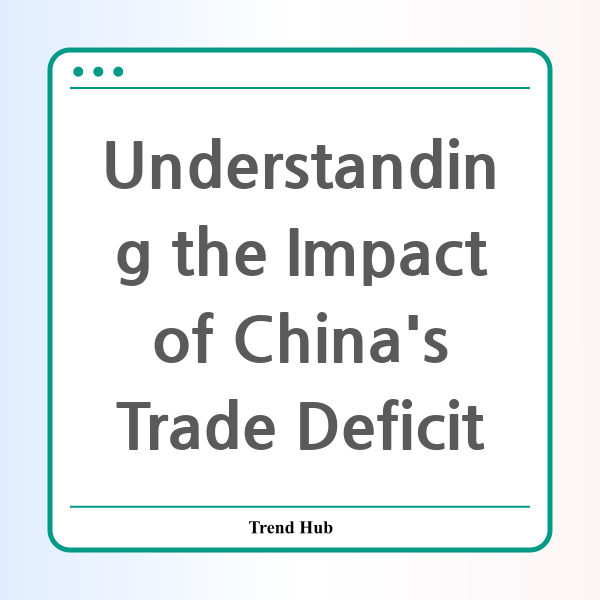* This website participates in the Amazon Affiliate Program and earns from qualifying purchases.

As global markets tremble under the weight of rising tariffs and trade tensions, the implications of the ongoing trade deficit with China have come to the forefront of economic discussions. What does this significant trade imbalance mean for the United States and the global economy?
The trade deficit with China, which exceeds $1 trillion, has been a point of contention for current and past administrations. President Trump’s assertion that the U.S. suffers massive financial deficits with China, the European Union, and others, emphasizes a critical economic issue. He states, "Unless we solve that problem, I’m not going to make a deal," highlighting the urgency of addressing this imbalance.
Trump's administration has labeled tariffs as a necessary "medicine" to cure the trade woes of the United States, suggesting that the pain inflicted by these tariffs is aimed at healing the economy in the long run. As tariffs escalate, concerns mount over rising prices, weakened demand, and the specter of a global recession. This volatility has led analysts, including those at Goldman Sachs, to foresee a 45% chance of a U.S. recession in the next year, which would impact not only the American economy but also global markets.
Investors have reacted nervously, driving stock prices down significantly, as the unpredictability of Trump's trade policies casts a shadow over future economic growth. The notion that tariffs could potentially bring in trillions in investments for manufacturing and other businesses is countered by fears of economic contraction fueled by these same tariffs.
What does this trade deficit mean for American consumers and businesses? As manufacturers look to relocate their operations stateside, benefits may be realized in the long term through job creation and industrial growth. However, the immediate effect of tariffs often results in increased costs for consumers on everyday goods. This paradox puts pressure on the administration to balance the goals of reducing trade deficits while fostering economic growth.
Moreover, international responses to U.S. tariffs reveal the complexities of global trade relations. Countries like Taiwan and India have expressed willingness to negotiate terms to avoid the financial burdens of tariffs, while Europe remains divided on how to respond effectively without harming its own economic interests.
For businesses, understanding the implications of tariffs on supply chains and pricing strategies is crucial. Companies might need to reassess their operational frameworks, considering both domestic manufacturing incentives and international trade costs. This adaptation will be necessary to maintain competitive pricing in an increasingly complex global marketplace.
In conclusion, the trade deficit with China is not just a number; it represents a broader narrative of economic strategy and international relations. As these dynamics continue to unfold, it remains essential for both policymakers and businesses to navigate the challenges posed by tariffs and trade imbalances carefully. What steps should the U.S. take to address its trade deficits, and how can businesses prepare for a future shaped by these ongoing negotiations?
* This website participates in the Amazon Affiliate Program and earns from qualifying purchases.